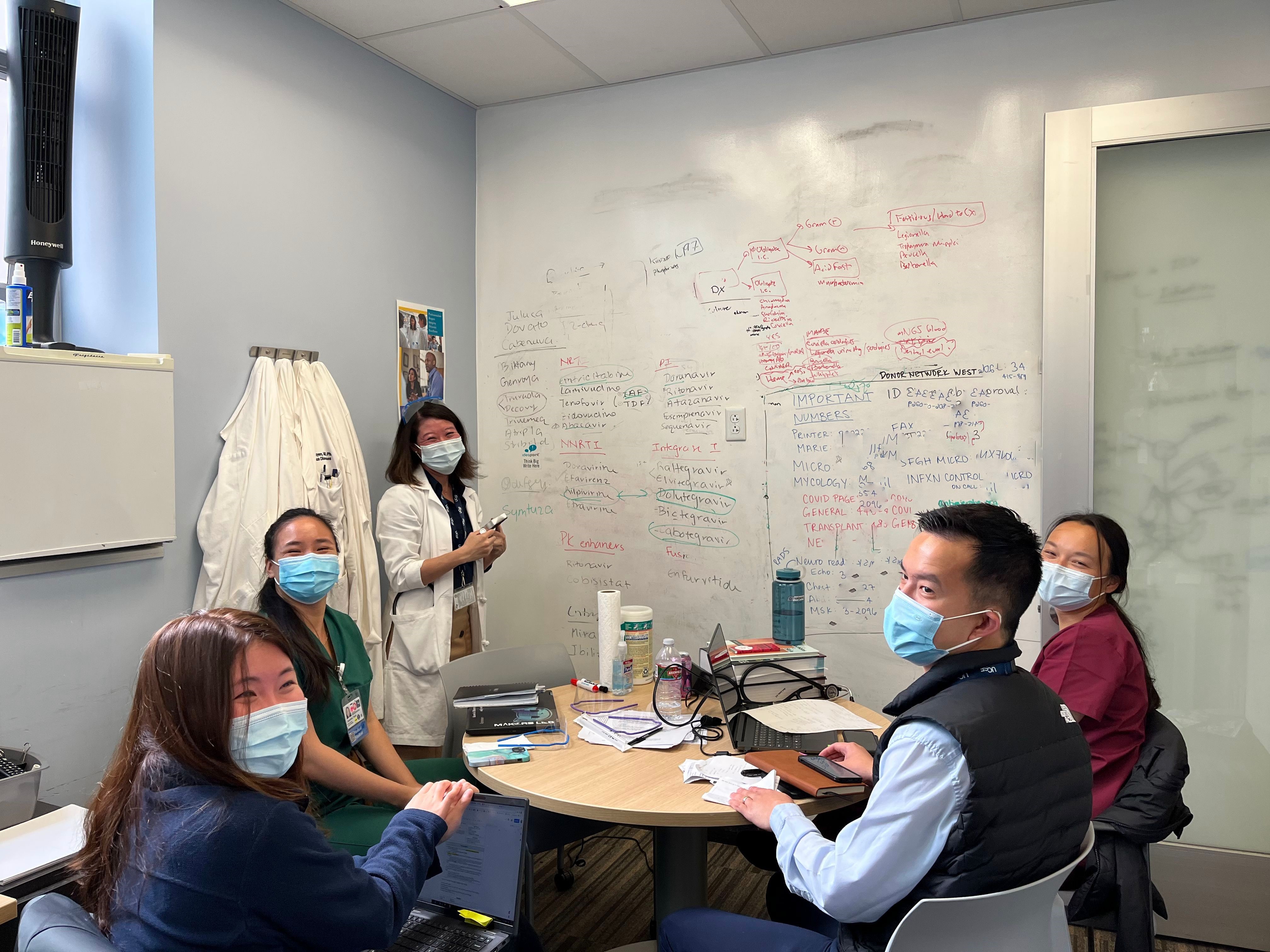Clinician Educator Track

The first year of clinical training is the same in the Research and Clinician Educator tracks. The second-year in the Clinician Educator track is devoted to (1) enhancing the fellow’s clinical expertise, (2) obtaining formal training in medical education or other areas of interest such as Transplant ID, HIV, Addiction Medicine, or Antimicrobial Stewardship/Infection Prevention, and (3) engaging in scholarly activity.
The clinical program in the second year can be personalized to meet an individual fellow’s goals. It includes inpatient consult time at Zuckerberg San Francisco General Hospital and UCSF Health, tailored to meet the specific interests of the fellow in terms of the balance of General and Transplant ID. Clinician educator fellows usually have 2 outpatient clinics per week in the second year to enhance their ambulatory ID education. Clinic options include an HIV continuity clinic at San Francisco General Hospital (“Ward 86”), UCSF Health, and SFVAMC as well as Transplant or General ID Clinics at UCSF Health.
Formal training in medical education may be obtained through the Health Professions Education Pathway, a one‐year program dedicated to providing learners with a strong foundational understanding of medical education. This includes a one-month intensive in-class learning program as well as support for an educational research project. Clinician Educator fellows are also supported by the ID Division to attend IDWeek in their second year. Scholarly activities include curriculum development, clinical research, and/or participation in quality improvement projects. Fellows will have access to internationally renowned medical educators within the Division of Infectious Diseases, Department of Medicine, and the larger UCSF community.
Fellows have multiple opportunities for direct teaching. They can provide informal teaching of residents and students on the ID consult services, serve as a small group facilitator in the medical student microbiology course, give lectures to residents in the residency noon conference series, serve as an expert discussant at resident case conferences, and give talks for ID and HIV Grand Rounds. Clinician educator fellows also gain experience in educational leadership by being a Chief Fellow in their second year, and have the opportunity to participate in additional leadership training, if desired.
Fellows may be in the Clinician Educator track and also participate in any of the program’s subtracks (Antimicrobial Stewardship/ Infection Prevention Track, Transplant ID Track, HIV Track, and Addiction Medicine Track).
